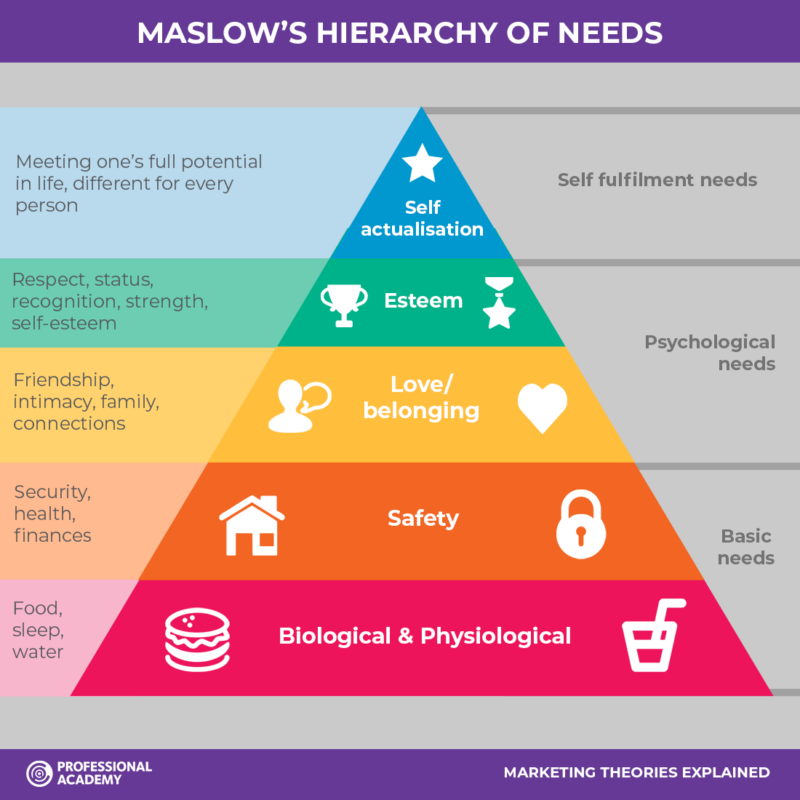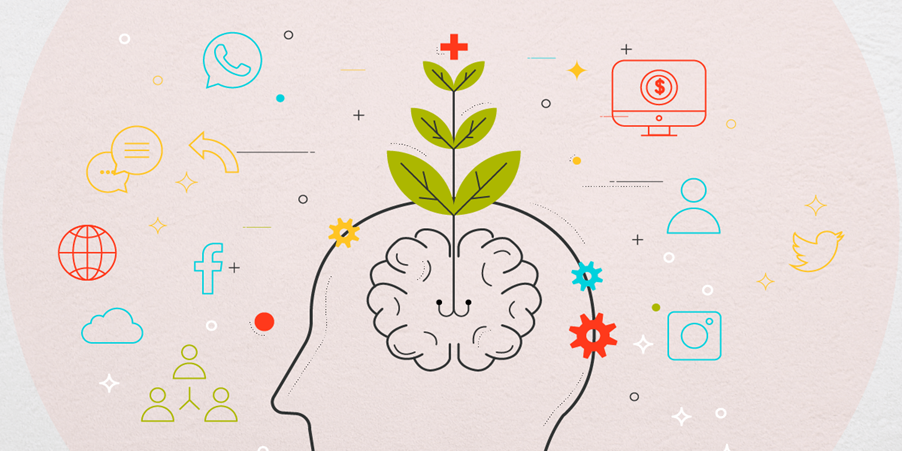Mindful Marketing: Understanding how psychology plays into successful branding
Have you ever wondered why you’re drawn to that “limited-time offer” or why a product marked $29.99 seems like a much better deal than one set at $30.00? Welcome to the world of psychology and marketing, where your favourite brands strategically target the way you think.
But, what’s marketing got to do with psychology? It’s all to do with understanding how to influence consumer behaviour. Psychology models offer valuable insights into why we make decisions and how we respond to marketing strategies, especially when they are emotionally appealing and personally relevant.
If you’re building a brand, wanting to generate more sales, or simply trying to understand why you feel compelled to buy that discounted item you really didn’t need, you’ll need to know the most effective mind tricks.
Here’s a list of the common psychological models that marketers use to capture their audience’s attention.
- The Elaboration Likelihood Model – Persuading your customers
The Elaboration Likelihood Model helps us understand how consumers are likely to be persuaded by advertisements. The theory posits two routes to persuasion – Central (focuses on detailed information like data) and Peripheral (focuses on superficial cues like aesthetics and imagery). Using the right route determines whether positive attitude change occurs in the audience.
Relevance to Marketing:
You’ll want to choose the route that depends on how your customers are involved with your product. Successful marketers know that high-involvement products like cars or houses need to use the central route for their logical audience, and low-involvement products like snacks or clothes need to use the peripheral route for their superficial audience .
Tips for the Central Route – Make it believable!
Your central route audience wants the facts. They don’t care about all the bells and whistles – just detailed information about the product. You’re not going to trust an automotive company that claims to have high durability without seeing a statistic showing lower rates of repair issues compared to their competitors.
Marketers will provide impressive data that support their product and give the audience all the information they need to make a hefty purchase.
Tips for the Peripheral Audience – It’s just got to feel good
If you’re selling everyday, low-cost items, you’re in luck! It’s much easier to make this audience purchase your brand because it requires simpler messages and superficial cues. Successful brands use emotional appeal by creating advertisements that evoke strong emotions like happiness or nostalgia. If you’ve ever seen Coca-Cola’s “Share a Coke” advertisement and felt a strong urge to crack open a can with your friends, that’s because the company has tapped into our emotions through the joy of sharing. It wouldn’t have taken long for you to crave a can of Coke because the peripheral route was used.
It’s also important to use inspirational and appealing visuals to create a positive association with your brand. Celebrity endorsement is common as it sways consumers based on their admiration of the celebrity. That’s why you see famous athletes endorsing an energy drink.
- Anchoring Theory – Making it seem worth the money
Anchoring Theory suggests we rely heavily on the first piece of information (the “anchor”) when making decisions. The “anchor” is our reference point and influences subsequent judgments, even if it’s irrelevant.
Relevance to Marketing:
In marketing, advertisements leverage Anchoring Theory to guide consumer perceptions and behaviours. They do this through discounted items and bundling to make that deal seem even sweeter.
Original vs. Discounted Price
Imagine you’re searching for a bag. You see one priced $200 on one website and think “no way!”. But then you see one marked down from $300 to $200 on another website and it suddenly seems like a bargain – so you buy it.
It’s the same price, yet why does one seem like a better deal than the other? That’s because the second website has shown the original price alongside the discounted one, creating an anchor that makes the sale price seem like a better deal. Brands even do this by comparing a high-end product to a cheaper product of theirs, making it a win-win scenario. Not only do they promote the lower-priced product to make it appear more affordable, but they also showcase their luxury products to make the audience want to fulfil their desire for success – which ties into a theory discussed later.
Bundling
Marketers may present a bundle of items with a costly combined price, then offer a discount for purchasing the bundle. The high initial price is the anchor, making the discounted price seem like a great deal. These advertisements get you to spend more whilst exposing you to a variety of their products. Bundling items increase the audience’s chance of finding something they like and will repurchase.
This is also why that “buy two, get one free” deal made you spend more on shoes than you wanted to, because it makes you feel you’re saving money (even if you only needed one pair of shoes in the first place!)
- Maslow’s Hierarchy of Needs – Playing into your audience’s emotions
Abraham Maslow developed a hierarchy of needs model that describes the universal needs humans must fulfil. This model posits that individuals are motivated to satisfy basic needs before moving on to higher-level needs. He represents this in a pyramid and splits it into five sections:

Relevance to Marketing
1. Physiological Needs – Basic Product Marketing
This focuses on the necessities we can’t live without – nutrition, water and sleep. They’ll convey a simple message about their product, emphasising that it is essential and addresses consumers basic needs.
Example: Woolworths uses their homebrand to target consumers with their low prices on everyday items. They make customers feel like they can’t live without their items.

2. Safety Needs – Security and Dependency
At this level, it is more likely insurance companies and home security system products, that set out to convey a sense of safety to their audience if they invest in their brand.
Example: We all need to feel safe – physically, financially and emotionally. And NRMA (National Roads and Motorists’ Association) successfully assures their audience that they offer long-term protection and reliability, providing insurance that protects them in many ways. Using emotionally appealing words that emphasise protection and care draws audiences to invest in NRMA. This way, their customers feel peace of mind.

3. Love and Belonging Needs – Fostering Community
Advertisements that focus on fostering relationships. They make you believe their brand will give a sense of belonging.
Example: Airbnb promotes the idea of belonging anywhere with their “Belong Anywhere” campaign. They use marketing to highlight the ‘homely’ experience of staying at someone’s place and connecting with other communities.
4. Esteem Needs – Opportunistic Marketing
High-end brands use advertisements to make their audience feel their products will bring luxury and success. They play into their customers’ desire for status and recognition.
Example: Rolex uses high-profile endorsements to make the audience feel as if they too could be like the star on the screen if they buy their products. These endorsements elevate the brand’s sophistication.

5. Self-actualisation Needs – Fulfilling Your Potential
Lastly, brands will target our desire to reach our full potential. This is the highest level of needs that we all strive for. Brands ranging from self-help books, to fashion, to technology, all appeal to our self-actualisation needs by making us feel our lives can be more meaningful and successful.
Example: Nike’s “Just Do It” campaign makes you feel that your capabilities are endless. It really makes you think you can do anything – which is what keeps Nike’s customers loyal.
The Downside of Maslow’s Theory
While this framework is popular in understanding consumer behaviour, Maslow’s Theory is limiting in its overemphasis of hierarchical progression.
Maslow’s Theory suggests that we must satisfy lower-level needs before moving onto higher-level needs. In reality, we might pursue higher-level needs, like self-actualisation, even if some lower-level needs are not met. Our mix of motivations do not follow such a rigid hierarchical order.
For example, a luxury brand usually targets an audience that has fulfilled all their needs except self-actualisation. They believe that there is only one particular audience and that they are looking for prestige and status as a reflection of their higher-level aspirations. However, this approach neglects the customers who might be interested in high-end products, despite not having their lower needs met. Someone struggling with basic financial stability might still aspire to own luxury products to fulfil their esteem needs before their physiological needs. Tweaking the way we use Maslow’s Theory can help widen our target audience and highlight various aspects of products that appeal to different levels of the hierarchy.
Putting It All Together
Understanding these psychological models and how successful brands use them can transform the way you promote your products and connect with your audience. Whether you’re designing advertisements or setting prices, these models provide insight into how the minds of your audience work. Mastering the integration of marketing and psychology is crucial for staying ahead of the curve and knocking competitors out of the park.
You may or may not have noticed, but I’ve used psychology tactics myself to get you to keep reading! These strategies are useful anywhere, you’ve just got to use them in the right way.




